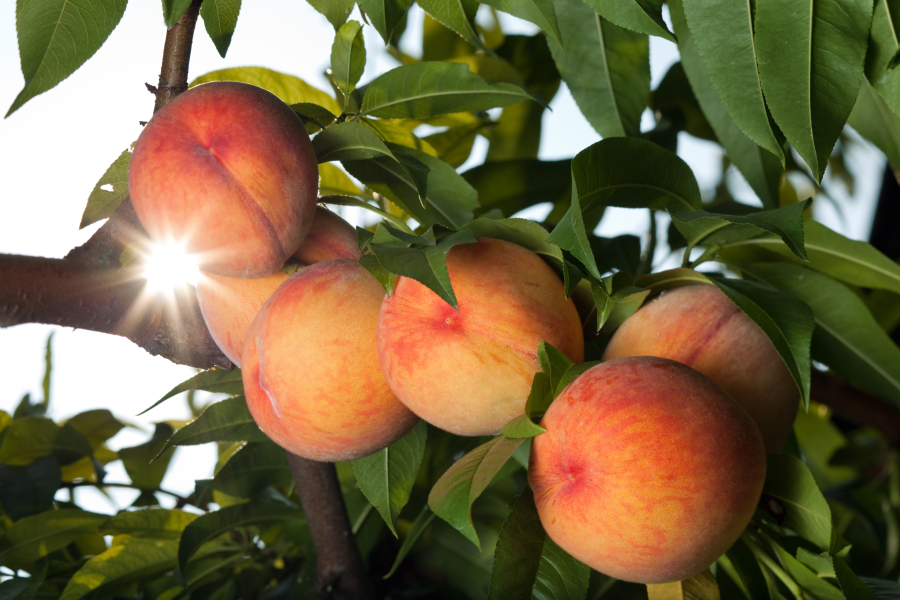Peach season is here. Hooray! There is nothing more delicious than that first bite into a perfectly ripe peach, releasing a virtual party of flavor on your taste buds.
Peaches are the virtuosos of the summer fruit world, and are delicious not only alone but with a wide variety of other fruits that are in season. The perfect snack, a medium-sized peach has only 68 calories, contains 3 grams of fiber and a good source of vitamins A and C.
Originally from China, the peach is a member of the rose family. Spanish explorers brought it to the Americas in the 16th century. The first peach orchard in North America was established in 1565 in what is now Florida.
Did you know that the peach was originally known as a Persian apple? There are two types of peaches, freestone or clingstone. A freestone peach comes away from the pit easily, while a clingstone’s flesh sticks to the pit and is hard to remove. Most peaches sold today are freestone.
Many varieties are available at area farmers markets, fruit stands and U-pick farms. The most popular of these freestone varieties grown locally are Red Haven, Cresthaven, Elberta and Veteran. Cresthaven is a medium-to-large, golden-yellow peach, excellent for preserving. The Red Haven has very little fuzz, is a golden-to red color and tends to be clingstone until fully ripe and then the pit comes out easily. Delicious for desserts, canning and freezing. Elberta peaches are large, with a small pit and the best-known canning peach. Veteran peaches are an extremely delicate peach that bruises easily but the skin peels of easier than any other variety. White peaches are usually considered slightly sweeter and less acidic but don’t process as well.
When buying peaches, choose ones that are still firm but slightly soft to the touch, don’t buy any with soft spots, bruising or cuts. Never squeeze a peach, even gently to test for ripeness — this bruises them! Look for peaches that are yellow with a reddish blush. White peaches will be yellowish white at the stem end.
Peaches continue to ripen after being picked which makes them one of the more perishable fruits. They will keep in the refrigerator for up to two weeks. Mature but slightly hard peaches can be kept at room temperature. Place stem side down until they ripen or if you want them to ripen quickly, store them in a paper bag and close the top.
Room-temperature peaches have the best flavor. Before eating, be sure to wash the fruit in cold water and gently rub. Peaches eaten fresh do not need to be peeled, but when preserving or baking, you should peel them.
After slicing, peaches will turn brown when exposed to air. To prevent them from darkening, dip or set them in water with a few drops of lemon juice in it or use ascorbic acid powder.
Peaches can be enjoyed fresh, made into ice cream, added to smoothies, cut up in a salad, grilled or baked into a delicious pie or cobbler. Peaches compliment chicken, pork and seafood dishes and go well with all types of grains and rice. Peaches can also be canned, dehydrated or frozen. They make wonderful jams, marmalades, jellies, salsa or syrup.
For additional peach recipes and serving suggestions, check out Chef Scotty’s Market Fresh Recipes at http://ext100.wsu.edu/clark/?p=8163.
Vicki Ivy is a Clark County WSU Extension Master Food Preserver. For additional recipes, food preservation and food safety information visit http://ext100.wsu.edu/clark/?p=1134. Have questions? Call MFP Helpline: 360-397-6060 ext. 5366, or join Facebook Discussion Group “WSU Home Food Preservers – Clark County.”



